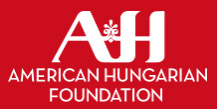William Penn Life, 2018 (53. évfolyam, 1-12. szám)
2018-10-01 / 10. szám
Tibor's Take homeland. Most found their way to Austria and were met by a friendly government, active civil aid societies and a generous citizenry. After initial logistical difficulties and the chaos of responding to an unforeseen refugee crisis, the machinery of a concerted government and international response enabled 100,000 Hungarian refugees to find resettlement in another country within a mere 10 weeks. This feat should not be understated: this was accomplished during an era with no internet, no high speed rail service and no standard operating procedure for how the international community should respond to a humanitarian crisis of this magnitude. According to the United Nations High Commissioner for Refugees, it was not even clear at the time if these Hungarians could even be considered refugees under the 1951 UN Convention on Refugees. But, a UNHCR lawyer named Paul Weis provided a legal justification that set precedent for how the international law of refugees operates today. The UNHCR concluded that these Hungarians could be considered prima facie refugees, or, refugees on nothing more than on the face of their current circumstances. This is not a meaningless determination—it meant that anyone in a group that met some basic criteria would be presumed a refugee, and would remain so unless a later background check showed otherwise. This has been a fixture of the law relating to refugees ever since, and it has started with the Hungarian crisis of 1956. By December 1956, President Eisenhower had committed to accepting more than 21,000 Hungarian refugees for resettlement in the United States. Then-Vice President Nixon even traveled to Austria to take stock of the situation in the refugee camps, providing a detailed report and discussion that still remains in the State Department historical archives. It is apparent that the Eisenhower Administration was willing to go to great lengths to provide a path for permanent resettlement of the Hungarians. Eisenhower later Images from ‘The Flight from Hungary" (The News Magazine of the Screen, Vol. 7, Issue 5, 1957) published by Wamer-Pathe News. traveled to New Jersey to greet one of the first batches of Hungarian refugees on American soil. For those that came, Hungarians found various charities and government efforts to provide basic necessities, jobs and eventual legal immigration status. There is footage of dozens of Hungarians deplaning at an air base in New Jersey, greeted by cheering people, reporters and a military band. Looking back, this international and domestic response seems extraordinary; frankly, it gives me chills. ****************************************************************** I wrote this Take on the day Sen. John McCain was buried at the U.S. Naval Academy in Annapolis, Md. Like the thousands of Hungarian freedom fighters, Senator McCain fought and suffered in opposition to Communism and in hopes of providing a better future for humanity. Senator McCain always had faith in the inherent goodness and greatness of America-traits that this country has had and will always have. Because of these traits and the ideals for which Senator McCain fought for, it is obvious to me why so many Hungarian refugees would want to resettle in the United States, and why so many still want to do so today. Éljen a Magyar, Tibor II Sources used for this Take: • http://www.unhcr.org/en-us/neivs/latest/2006/10/453c7adb2/ fiftieth-anniversary-hungarian-uprising-refugee-crisis.html • http://www.osaarchivum.org/press-room/announcements/ Hungarian-Refugees-1956 • http://www.iwm.at/publications/5-junior-visiting-fellowsconferences/vol-xxv/deconstruction-of-a-myth/ • https://ahea.pitt.edu/ojs/index.php/ahea/article/viewTile/ 255/440 • http://www.unhcr.org/3db9636c4.pdf • https://history.state.gov/his toricaldocumen ts/frusl955-57 v25/d218 Tibor Check., Jr., is a member of Branch 28 and an attorney working in Washington, D.C. Let's hear your take If you have any questions or comments about any of my columns, please email me at: silverkingl937@ gmail.com, or drop me a letter in care of the William Penn Association, 709 Brighton Road, Pittsburgh, PA 15233. WILLIAM PENN LIFE 0 October 2018 0 7
